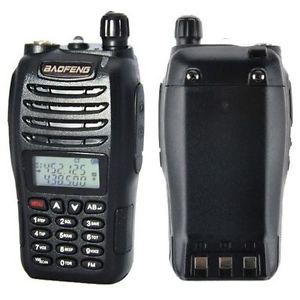Difference between revisions of "Baofeng UV-B6"
(→programming) |
(→programming) |
||
| Line 17: | Line 17: | ||
==programming== | ==programming== | ||
Field program menu: | Field program menu: | ||
| − | # | + | #STEP - |
| − | # | + | #SQL - |
| − | # | + | #SAVE - |
| − | #TXPR | + | #TXPR - |
| − | #ROGE | + | #ROGE - |
| − | #TOT | + | #TOT - |
| + | #VOX - | ||
| + | #BEEP - | ||
| + | #VOICE - | ||
| + | #TDR - | ||
| + | #R-CODE - | ||
| + | #T-CODE - | ||
| + | #ABR - | ||
| + | #PTTID - | ||
| + | #ANI - | ||
| + | #PTIDM - | ||
| + | #DT-ST - | ||
| + | #MDF 1 - | ||
| + | #MDF 2 - | ||
| + | #BCL - | ||
| + | #SFTD - | ||
| + | #OFFSET - | ||
| + | #SCRNM - | ||
| + | #REV - | ||
| + | #STE - | ||
| + | #NAME - | ||
| + | #W/N - | ||
| + | |||
===save simplex channel to memory=== | ===save simplex channel to memory=== | ||
This model programs channel different than the BF-F8HP/UV-5R because the channel memory is not accessed though the [MENU] button. | This model programs channel different than the BF-F8HP/UV-5R because the channel memory is not accessed though the [MENU] button. | ||
Revision as of 13:00, 16 May 2016
BAOFENG UV-B6 136-174/400-480Mhz MENU 27 with FM radio
- Dual band, Dual Display, Dual Standby
- Priority Channel Scanning
- Li-ion battery pack with high capacity
- CTCSS/DCSS PTT ID
Retail: $40 - $60
Contents
review
The UV-B series receiver does not overload anywhere as easily as the UV-5R.
Weird thing, I am able to enter 1.25-Meter band frequencies and transmit with my UV-B6. I discovered this by accident when I was experimenting. This may not be good for the radio, however, it is capable of doing it.
programming
Field program menu:
- STEP -
- SQL -
- SAVE -
- TXPR -
- ROGE -
- TOT -
- VOX -
- BEEP -
- VOICE -
- TDR -
- R-CODE -
- T-CODE -
- ABR -
- PTTID -
- ANI -
- PTIDM -
- DT-ST -
- MDF 1 -
- MDF 2 -
- BCL -
- SFTD -
- OFFSET -
- SCRNM -
- REV -
- STE -
- NAME -
- W/N -
save simplex channel to memory
This model programs channel different than the BF-F8HP/UV-5R because the channel memory is not accessed though the [MENU] button.
Enter and Save to channel
- key in desired frequency such as 442.400 for example
- Press and hold [VM/SCAN] until voice says MEMORY CHANNEL and/or channel number flashing
- Select desired channel number with up/down and press [AB/ENTER] to save to memory
NOTE: If channel number is blinking, that channel has been previously programmed and will be overridden.
repeater offset and CTCSS
In this example will enter a 70cm repeater with PL and +5Mhz offset.
offset + or -
- Enter the VFO Mode
- Set offset [MENU] and arrow to item 21 (SFTP)
- Press [AB/ENTER] use arrow to select + and press [AB/ENTER] and [MENU], [MENU] to save
offset amount
- Press [MENU] and arrow to item 22 (OFFSET)
- Press [AB/ENTER] then enter the offset
- Press [AB/ENTER] and [MENU], [MENU] to save
PL / CTCSS
- Press [MENU] and arrow to item 12 (TCODE)
- Press [AB/ENTER] then enter the frequency in Hz
- Press [AB/ENTER] and [MENU], [MENU] to save
Enter and Save to channel
- key in desired frequency such as 442.400 for example
- Press and hold [VM/SCAN] until voice says MEMORY CHANNEL and/or channel number flashing
- Select desired channel number with up/down and press [AB/ENTER] to save to memory
NOTE: If channel number is blinking, that channel has been previously programmed and will be overridden.
Technical Support
Firmware Update
The firmware in these radios cannot be updated. The microcontroller is an OTP type. (One Time Programmable) Once 'flash' programmed at the factory, it cannot be changed.
CTCSS Squelch Stuck On in VFO Mode
The presence of the letters "CT" in the top of the display indicates CTCSS or "tone Squelch" is active. This is a toggle that cannot be found in the HT program menu.
External Resources
- [Miklor Programming Baofeng UV-B6 http://www.miklor.com/UVB5/UVB5-ProgMem.php]
